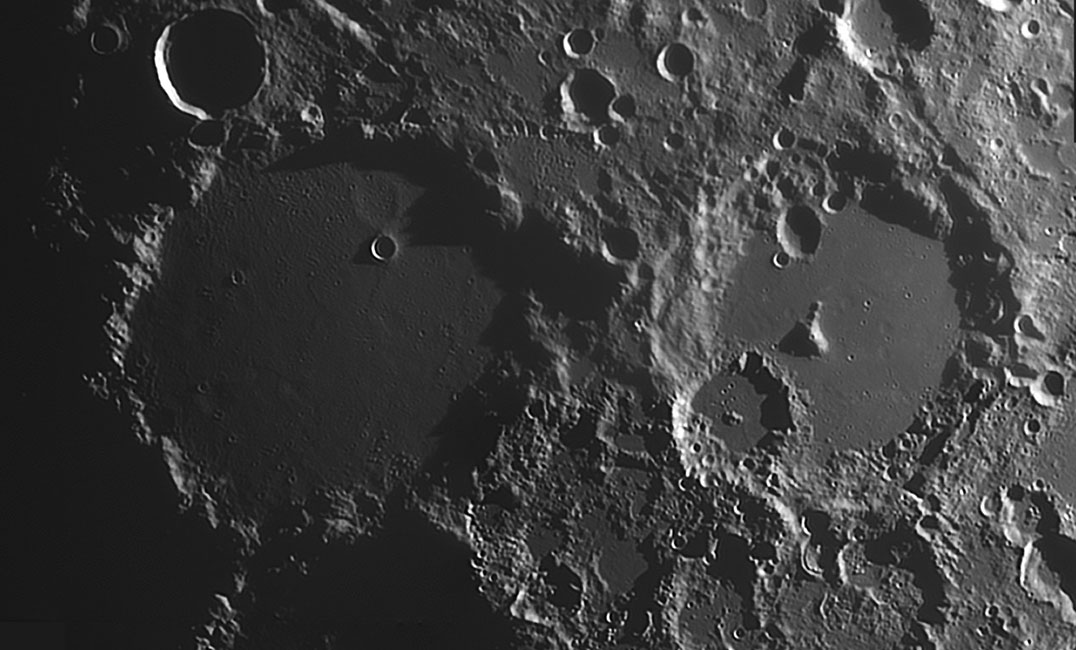December 6, 2020
After And After; No Before
Originally published May 19, 2011

image by Antonio Lasala Garcia, Morata de Jalón (Zaragoza, Spain)
We have seen these two separately recently, but looking at them together invites comparisons of processes and modifications.
Ptolemaeus (on the left) and Albategnius are both large complex craters. With diameters of 158 and 131 km, they both should
have initially looked pretty similar to 131 km wide Langrenus. Each would have formed with a towering series of terraces drop-
ping from the crest of the raised rim down about 4.5 km to a broad flat floor, with a cluster of peaks near the center rising 3 to 3.5
km above the floor. The two craters here look quite different from the Langrenian ideal, most notably they are not as deep and
consequently their floors are broader than for a fresh crater. Ptolemaeus is most strongly modified, its floors being so filled with
Imbrium ejecta and other materials that its central peals and all of its terraces are buried. With a depth of 2.4 km, the filling is
probably 2 to 2.5 km thick. Albategnius is much deeper (3.5 km) and consequently more of its walls and its most massive central
peak are still visible. Seismic shaking (from the Imbrium formation and the later crater Klein on its rim) jumbled most of the terraces
but some remnant structure is hinted at on the southeast wall. And the peak is still visible because its initial 3 km height is only
half covered by crater fill. The fact that the peak is off-center always seems suspicious, but the peaks of Copernicus would look
nearly identical if filling reduced that grand crater's depth by about a half. When ever you observe an older, battered crater, also
look for a fresh one of about the same diameter and see if you can figure out what processes explain the modifications of the
older ones.
Chuck Wood
Technical Details
2011-05-10, 18h12m to 18h30m UT. Newtonian 254 mm + DMK 21au04.AS + R25 filter.
Related Links
Rükl plate 44
Yesterday's LPOD: Not in the Textbooks
Tomorrow's LPOD: Page One of a Lunar Alphabet Book
COMMENTS?
Register, Log in, and join in the comments.



